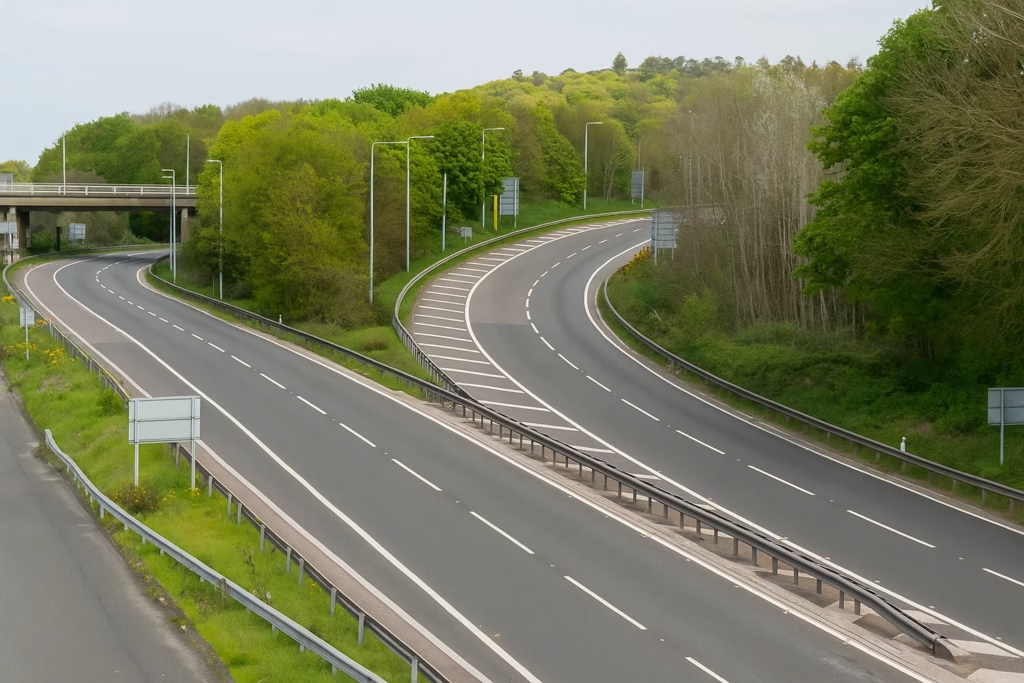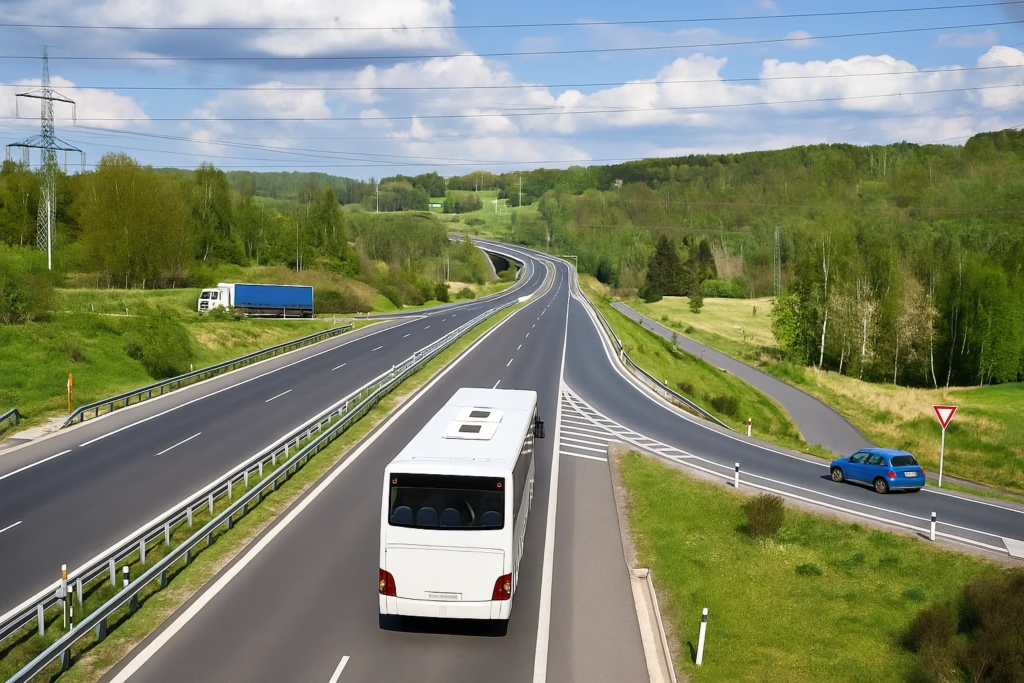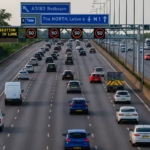If you’ve ever driven on a motorway, highway, or dual carriageway, you’ve probably used a slip road—maybe without even realizing that’s what it’s called. Slip roads are one of the most important features of our road networks because they allow vehicles to join or leave fast-moving roads safely. Yet, many new drivers (and even some experienced ones) get nervous about using them.
What Is A Slip Road?
A slip road is a short stretch of road that connects a motorway, highway, or dual carriageway to another road. You can think of it as an entry ramp or an exit ramp, depending on whether it leads you onto or off the main road.
Entry slip road (on-ramp): This is the road you use to join a motorway or dual carriageway.
Exit slip road (off-ramp): This is the road you use to leave a motorway or dual carriageway.
Slip roads are designed to make transitions safer by separating the slower speeds of turning traffic from the faster flow of vehicles on the main road. Without them, cars would need to stop directly on high-speed roads just to turn off—or dangerously speed up from a standstill to join traffic.
How To Use An Entry Slip Road
1. Check the signs
Before you even enter the slip road, you’ll usually see signs for the motorway or dual carriageway ahead. Pay attention so you know which lane you’ll need once you join.
2. Build up speed
As you drive along the slip road, start accelerating so that your speed matches the vehicles on the motorway. The whole point of the slip road is to give you space to get up to speed before merging.
3. Use mirrors and signals
Check your mirrors and blind spots early. Put your indicator on to show you plan to join. This helps drivers on the motorway see you coming.
4. Find a safe gap
Look for a space in the traffic flow. The idea is to merge, not force your way in. If traffic is heavy, adjust your speed so you can slot safely into a gap.
5. Merge smoothly
Once you’ve found a gap, steer gently into the lane. Avoid braking suddenly or stopping on the slip road—it can be dangerous because cars behind you also expect to join.
6. Keep going
After joining, cancel your signal and keep a steady speed. Then adjust lanes if needed, but only when safe.

How To Use An Exit Slip Road
1. Plan early
Motorway signs will usually warn you one mile and then half a mile before your exit. Get into the correct lane in advance so you’re ready.
2. Signal your exit
Use your indicator in good time—usually at the 300-yard marker before the slip road—so other drivers know your intentions.
3. Move steadily into the slip road
When the exit arrives, leave the motorway smoothly. Don’t swerve suddenly or cut across traffic at the last minute.
4. Reduce speed gradually
Once on the slip road, you can start braking gently to reduce speed. The slip road often leads to a roundabout, traffic lights, or another road where slower speeds are needed.
5. Stay alert
Exit slip roads may have sharp bends or unexpected traffic queues. Always be prepared for what’s ahead.
Common Mistakes To Avoid
Even though slip roads are straightforward, many drivers still make avoidable mistakes. Here are some of the most common:
Stopping on an entry slip road: Unless traffic is completely jammed, you should never stop—it’s unsafe and causes chaos for cars behind you.
Not building up speed: Joining a motorway at 30 mph when traffic is moving at 60 mph is dangerous. Always accelerate to match traffic speed.
Forcing your way in: Merging should be cooperative, not aggressive. Forcing other drivers to brake sharply can cause accidents.
Last-minute lane changes: If you miss your exit, don’t swerve across lanes—carry on to the next one and turn back later.
Not signaling: Indicators are essential. Other drivers can’t read your mind.
Exiting too late: Leaving the motorway from the wrong lane or at the last second is risky. Always plan ahead.
Slip roads may look short, but they’re a vital part of modern road design. They allow traffic to flow smoothly, prevent accidents, and make motorways more efficient. Whether you’re joining or leaving, the key is always the same: plan ahead, signal clearly, adjust your speed, and merge or exit smoothly.
Discover more from SMOOTHSTEERING
Subscribe to get the latest posts sent to your email.




Pingback: Rules for Driving on Motorways in Europe